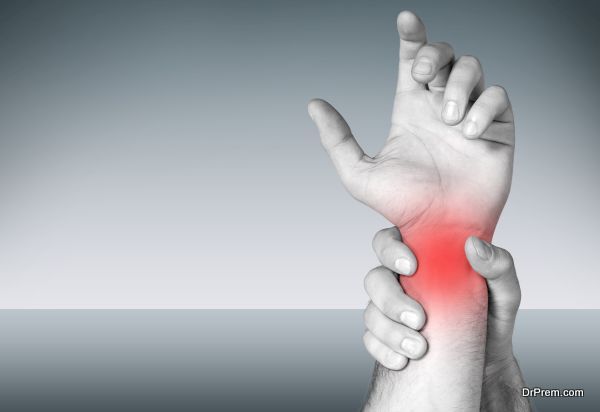Definition:
Carpal tunnel release is a surgical procedure, performed to treat the carpal tunnel syndrome when the other conservative treatment fails to relieve the symptom. Carpal tunnel syndrome is a progressive diseased condition caused by compression of a median nerve in the wrist, resulting in to severe pain and weakness of the hand and wrist. In long term, the carpal tunnel syndrome can cause permanent damage to median nerve leading to loss of function of the hand.
Details of Procedure:
Carpal tunnel release surgery is advised in conditions that includes
- Constant wrist pain associated with numbness, muscle weakness, or atrophy
- Symptoms for more than 6 months and not responding to non-surgical methods
- Progressive deterioration of hand functions
Many patients require surgery on both hands. There are two types of surgery for carpel tunnel syndrome:
- Open Carpal Tunnel Release Surgery
- Endoscopic or “Keyhole” Surgery
Facts and Figures:
- It was Sir James Paget, who first mentioned about the median nerve compression at wrist following a distal radius fracture in 1854 and in 1880, James Putnam presented the series of patients suffering from pain and paresthesia in the median nerve distribution for the first time
- The Carpal tunnel release surgery is the most common type of surgery of the hand and wrist. Approximately 260,000 carpal tunnel release operations are performed each year, with 47% of the cases considered to be work related. (National Center for Health Statistics.)
- The Carpal tunnel syndrome causes the highest number of days lost among all work related injuries. (National Center for Health Statistics).
- Carpal tunnel syndrome is three times more common among assemblers than among data-entry personnel.
Advantages and Disadvantages:
Advantages
- High success rate with good prognosis of the surgery. On an average 80 to 90% of patient returns to their original job after carpal tunnel release surgery.
- Many patient had experienced increased strength and restored normal function of the hand post surgery.
- No need to stay at hospital, its an out patient procedure
- Patients seeking carpal tunnel release through medical tourism can return home in a 1-2 days at most.
- Relatively safe procesure as the chances of developing serious complications are rare.
Disadvantages:
- Patients may loss full range of motion of the hand and wrist after surgery.
- Chances of recurrence of symptoms following open release is up to 20%
Pre and Post-operative care
Pre-operative preparations:
- Physical examination
- All diagnostic test
- Blood and urinalysis
- Consultation with surgeon or doctor a week ago, and have a list of medicine which are to be taken or needed to be stopped.
- Inform the surgeon about habit of smoking and alcohol. Quit smoking.
- Arrangement for leave from work, help at home, helps with driving, and other routine work
- Have a supply of easy-wear clothing.
- Do not eat or drink anything after midnight the night before surgery
Post-operative care:
- After the procedure the wrist needs to be kept wrapped in bandage and a splint for about 1-2 week post operatively. A gradual rehabilitation program of physical therapy has to be followed rigidly to regain strength and flexibility of the hand, wrist and forearm.






